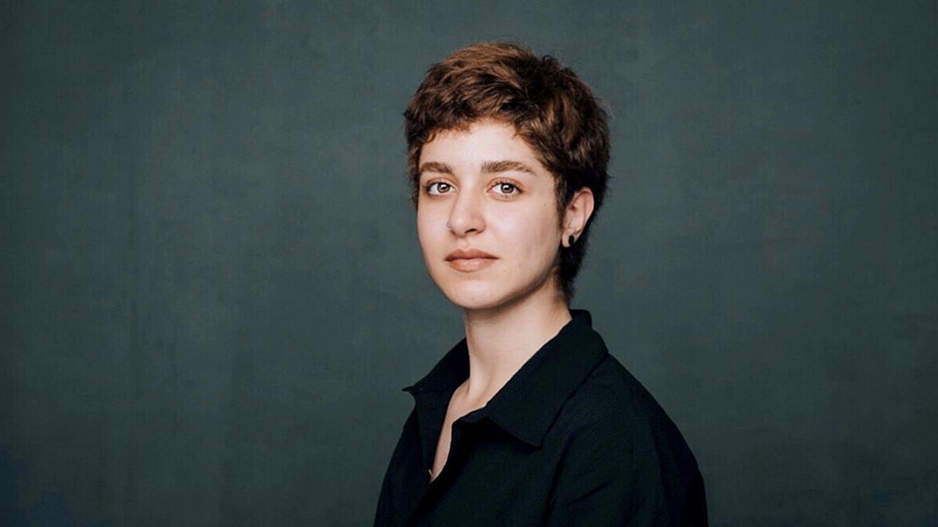Navigating Art and Politics Beyond the Surface
”How can I create politically charged performance art in a world that erases histories of resistance?” writes directing alum Homa Shokri in her text that explores the tensions between artistic freedom, decolonial practice, and the institutional limitations of Western art spaces. This text was originally published in the dramaturgy and directing programme’s newsletter.

During my time at Uniarts, my studies in directing unfolded against a backdrop of escalating global crises: the uprisings in Iran and Iraq, the brutal suppression of women’s rights in Afghanistan, the war in Ukraine, and the ongoing genocide in Palestine. These events coincided with the rise of right-wing governments across Europe – including Finland – and, paradoxically, with budget cuts to the arts. These realities compelled me to confront a critical question: How can I create politically charged performance art in a world that erases histories of resistance while systematically dismantling the spaces where such work can take form?
Coming to Finland, I sought artistic freedom. But this freedom came with its own set of challenges. As I encountered an increasingly unstable landscape, I became aware of the stark difference between creating political art in contexts of censorship, where survival is the first concern, and doing so in a Western context like Finland, where the stakes often feel much lower. This tension forced me to reflect on how art can serve as a form of decolonial practice – a means of questioning, resisting, and disrupting dominant narratives. It also pushed me to question how political performance can effectively challenge systems of power without becoming performative, sanitized, or complicit in its own erasure.
In academic and artistic spaces that claim to celebrate diversity, I have often encountered a troubling phenomenon: a shallow engagement with decoloniality. Despite the rhetoric of inclusivity, lived experiences are frequently reduced to labels or tools for artistic and political gain. Institutions and festivals often use these labels as markers of progress, showcasing diversity without engaging deeply with what it means to practice decoloniality. These dynamic risks reinforcing the same power structures it claims to resist, creating a performance of inclusion that rarely translates into meaningful action.
Decolonial practice is not a label; it is a lived and embodied process. It is not something to be only commodified or theorized in isolation – it must be actively practiced and woven into the structures of artistic and institutional frameworks. Yet, in Finland’s art scene, there is often little room for this depth. Discussions of decoloniality and inclusivity remain surface-level, overshadowed by what institutions deem more “urgent” issues. This is evident in the programming choices of certain festivals and theater institutions, where the same kinds of themes and performances dominate the stage, leaving little room for politically urgent, experimental, or unconventional work rooted in decolonial thought.
This lack of space is not just about politics; it’s also about performance art itself. In an environment that often prioritizes safety, predictability, and marketability, the potential for art to disrupt, provoke, or innovate is diminished. This dynamic creates an invisible censorship that prevents real engagement with uncomfortable truths – whether they concern global politics, artistic experimentation, or the lived experiences of those navigating the intersections of decoloniality and art-making.
When asked where I am now, I find myself at a crossroads, navigating the complexities of post-graduate life as someone whose work is deeply shaped by the political histories and decolonial struggles of the Middle East. These experiences, layered with the challenges of working in Finland’s art scene, have forced me to question not just how I create, but also where my work can find resonance. As I move forward, I remain committed to this process – finding ways to let my work disrupt, question, and insist on being heard, even in a world that prefers surface-level engagement and silence.
Writer
Homa Shokri
An Iranian-born director and dramaturg whose work focuses on political performance, exploring themes of violence, oppression, and the uninhabitability of bodies.
Visit Homa Shokri’s website.
About
The text was originally published in the OD newsletter [4/2024] as an alum’s word. The OD newsletter is a shared platform for two degree programmes at the Theatre Academy of Uniarts Helsinki: Directing (O) and Dramaturgy and Playwriting (D). The OD newsletter aims to reach beyond the school to share what performing arts students are anxious about, excited by, irritated with, or captivated by – what stirs them. The newsletter is published a couple of times per semester, accompanied by the ODcast podcast, which delves deeper into one of the newsletter’s topics. The content of the newsletter is written in a mixed-language format, representing both students and teachers – typically in Finnish, English, and Swedish.
Keskustelua dramaturgiasta
Dramaturgian ja näytelmän kirjoittamisen koulutusohjelman blogi, jossa Teatterikorkeakoulun dramaturgian opettajat ja opiskelijat käyvät keskustelua dramaturgiasta, dramaturgian opiskelusta, näytelmistä ja niiden kirjoittamisesta – ynnä muusta. Blogikirjoitukset vaihtelevat pidemmistä, artikkelimaisista teksteistä lyhyisiin lastuihin.
Uusimmat julkaisut
Seuraa blogia